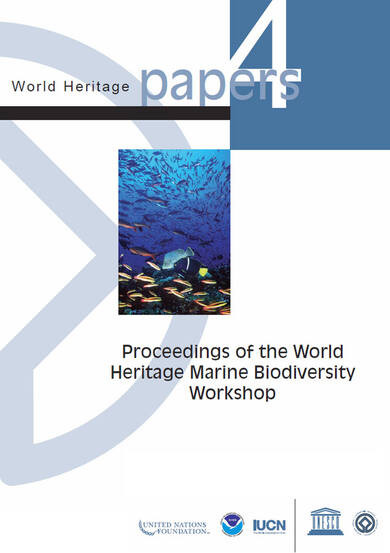The workshop organizers, UNESCO World Heritage Centre and the U.S. National Oceanic and Atmospheric Administration, wish to express deep appreciation for the assistance and collaborations of everyone who made this workshop a success and to acknowledge the many individuals and organizations that provided support to make this workshop possible.
Firstly, we would like to acknowledge the generous funding from the United Nations Foundation, for without such support, this workshop would not have been possible. The leadership of IUCN World Commission on Protected Areas - Marine Theme in directing this effort must be recognized along with the advisory support from the workshop Steering Committee that provided insight in the program development.
A number of other organizations must be acknowledged for their efforts: The World Wildlife Fund – US; The Nature Conservancy; and Conservation International who were each instrumental in developing the framework that outlined the biogeographic approach for identifying priority areas. We would like to especially acknowledge the contribution of WWF-US for assembling the datasets that were stage setting for achieving the outcomes of the workshop and led to the success of the experts in identifying and reaching final consensus on the globally significant areas for tropical marine biodiversity. UNEP-WCMC provided maps and background information about the marine and coastal World Heritage sites already inscribed on the World Heritage List.
Special thanks are extended to the many members of the IUCN - The World Conservation Union for their contribution to the project, most importantly to our host organization, IUCN Vietnam Office, for their continuous support and gracious professional assistance, which allowed smooth running of the workshop. The valuable technical staff and support of WWF - Vietnam also contributed to the effort. The Ha Long Bay Management Authority set the stage for the week by taking workshop participants to an informative site visit that provided the workshop participants with understanding of the challenges facing many World Heritage properties. Our sincerest thanks go to all workshop participants, who supported us through the difficult times following the postponement of the workshop in September 2001. Everyone worked enthusiastically during the workshop and thus enabled us to achieve the workshop goals of defining priorities and recommending areas from tropical coastal, marine and small island ecosystems for nomination on the World Heritage List.
Table of Contents
Foreword
Acknowledgements
List of Participants
Glossary
Acronyms
Hanoi Statement
Background
Discussion of Areas by Region and Regional Recommendations
Concluding Challenges and Recommendations
ANNEXES:
Annex 1. Threats and feasibility analysis for the highest priority sites per each region
Annex 2. Workshop process
Annex 3. Potential World Heritage Sites of the Central Indian Ocean Region
Annex 4. References
Map 1. World Heritage Tropical Coastal and Marine Sites










